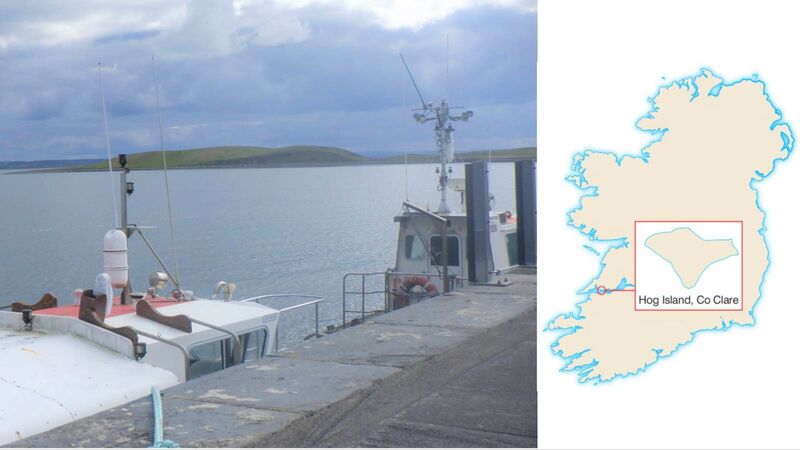Islands of Ireland: Rolling hills and peek-a-boo goats at Hog Island, County Clare

Hog Island County Clare
If ever an island were overshadowed by an illustrious neighbour then Hog Island, County Clare is the prime example. Not even possessed of a nice-sounding name, the island in the further reaches of the Shannon Estuary is the poor relation of Scattery Island which has the ruins of seven churches and a round tower.
Scattery also has a lovely lighthouse. In contrast, Hog Island has a broken-down cow shed.
And yet it is not without appeal. For one, it has some nice rolling hills and a population of goats that like to play peek-a-boo with rare visitors.
Hog Island or Inishbig comes in at a sizeable 43 acres. And for its size, it still has a diverse geography with a saltwater lagoon on its eastern side and a central area that divides its two dominating hills. The island is a classic example of an island formed by the movement of glaciers with glacial till deposited in the wake of the glacier. Over time, these deposits have been exposed by wave action and now much of the island’s coastline has such exposed cliffs.
A dwelling was constructed on the western side facing out into the Shannon Estuary. A family lived there in the early 19th century and would have had a great vantage point to see the sailing ships and steamships venturing up as far as Limerick City on the Shannon. The census record shows that eight people lived on Hog Island, and most likely farmed the land.
There is no pier on Hog Island now, nor any residents of course. However, a series of rusted metal shafts on the eastern shore indicates some sort of activity, probably related to fishing.
Hog Island is less than a kilometre from the village of Cappagh, just outside the busy town of Kilrush. And the village was home to several of the pilots who used to guide ships up to Limerick City.
Hog Island Kilrush Co Clare this evening pic.twitter.com/cILD8sQxfe
— Diarmuid Murphy (@Daingean58) April 2, 2021
The island is also associated with a myth from the Fianna cycle of legends through Diarmuid and Gráinne. The pair were involved in a stone-throwing contest from the shore near Kilrush and Gráinne bested her lover with a mighty throw that landed on Hog Island. The rock is still there, says the legend. It measures 8 feet by 8 feet.
The island was owned in the early 19th century by a William Blair which was part of his portfolio of 1,900 acres. It then passed into the hands of the notorious Colonel Crofton Moore Vandeleur (who also owned the island of Illaunaclaggin, which featured here a few weeks ago). His portfolio dwarfed that of Blair with at least 20,000 acres with thousands of paying tenants.
The Vandeleurs expanded a previous settlement to develop the town of Kilrush in the 18th century.
Within a couple of generations however, the family’s base at Kilrush House, was associated with inhumane treatment of their tenants. As the Famine struck, “evictions were on a terrible scale in the county,” records Clare County Library.
“Of the 20,000 evicted in Kilrush Union most died of starvation. Not all of these were Vandeleur tenants but most were. In 1848 there was little resistance; tenants had little or no legal help. Those evicted were wretchedly poor and their houses generally were mud cabins. Because the houses were so poorly built it was quite easy to force an entrance and knock them.”
Though he did make some attempts at helping the poor when the Famine hit, Vandeleur was regarded as a severe landlord, (but not as bad as his son Hector). “Since landlords were responsible for rates of £4 or less, Vandeleur sought to ease his liability by evicting hundreds of small tenants and levelling their cabins to ensure they would not return.”
In one incident in 1849 the Poulnasherry Bay ferry near Kilrush sank and 41 passengers drowned. They had been refused relief at the workhouse in the town and Vandeleur was held responsible. The Vandeleurs were “jeered and pelted with mud when they appeared in public”.
How to get there: The island is in private ownership.
For a tour of the islands by boat try westcoastribadventures.com
Other: clarelibrary.ie







